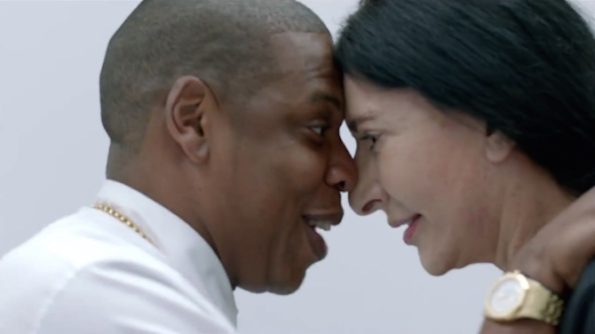Search
To search for an exact match, type the word or phrase you want in quotation marks.
A*DESK has been offering since 2002 contents about criticism and contemporary art. A*DESK has become consolidated thanks to all those who have believed in the project, all those who have followed us, debating, participating and collaborating. Many people have collaborated with A*DESK, and continue to do so. Their efforts, knowledge and belief in the project are what make it grow internationally. At A*DESK we have also generated work for over one hundred professionals in culture, from small collaborations with reviews and classes, to more prolonged and intense collaborations.
At A*DESK we believe in the need for free and universal access to culture and knowledge. We want to carry on being independent, remaining open to more ideas and opinions. If you believe in A*DESK, we need your backing to be able to continue. You can now participate in the project by supporting it. You can choose how much you want to contribute to the project.
You can decide how much you want to bring to the project.

It may seem that the operating mechanisms of contemporary art and popular culture are not so far apart, judging by the numerous exhibitions devoted to musical and cultural movements in museums and art centers that we have seen in recent years, which shows this to be the case. But how true is this statement? We discuss this and other topics with Richard Memeteau, professor of philosophy, sly geek and researcher about pop (not popular) culture.
In your book Pop Culture. Réflexions sur les industries du rêve et l’invention des identités (La Découverte, Paris, 2014) you make a distinction between pop culture and subculture (or counter culture). What are the main differences?
There is a major difference between counter culture and pop culture. Counter culture rejects any appropriation by a hegemonic power, while pop culture is perfectly okay with the idea of being re-appropriated. Foucault said in an interview that if a discourse is re-appropriable, it’s not because it’s spoiled, it’s because it is a stake of a battle of power and influence.
Before the era of punk culture, the main strategy of cultural minorities was to resist power by having their own language, music and art – a culture that is totally exotic for the mainstream audience. But with the punk movement there was a new strategy, way more pop than the former subversive avant-garde, because punk culture appropriates all the well known elements of the main culture and colors them with a scent of Unheimlichkeit[[the weird or uncanny]. And that’s very disturbing for people at that time, because it’s like looking in the mirror and seeing a familiar reflection turned into a monster. Punk and horror movies have both learnt to place the enemy within. The difference then is not in the choice of the very elements of culture, so much as in the actual “style” of the elements, as Dick Hebdige would say. In a way, this style is the same thing as irony or “camp” – a mainly gay aesthetic defined as the “art of equivocacity” by Susan Sontag. It repeats what you know but with an intention you can’t totally get if you’re not a part of it.
I believe what you are describing has been common practice in conceptual art for years we would call it détournement. Détournement was, as Greil Marcus explains in “Lipstick Traces”, one of the main forms of expression in punk. In both cases, détournement is used as a political weapon. Would you say that pop culture uses détournement in the same way as contemporary art does (but for a broader audience)?
Contemporary art, even if artists like Jeff Koons claim that they do the same thing as pop culture (spreading their vision to the largest group of people and becoming superstar), is practically the least pop thing that could exist. Art is no longer popular since contemporary art. It strikes me, with the recent controversies in France around the deterioration of the giant anal plug of Paul McCarthy or the “Piss Christ” of Andres Serrano. The reaction of the audience was sarcastic as well as the gesture of the artist itself. If art is irony and posture then its very destruction becomes logically insignificant. What should have happened, if contemporary art were pop is that it should have been defended by its own fans. Contemporary art has no fans it has buyers and a market, whereas the idea of pop culture is to turn money and the market into a sign of commitment, of support.
In a way the détournement in contemporary art is operated for nobody, without people or any group to claim it. Pop culture gives that re-appropriation to someone. Pop culture doesn’t give a fuck about who is concerned. That issue highlights the process by which art tries to find a new audience in the street or in a more direct way.
Particularly in the case of pop music as all of the artists you talk about in your book (Bowie, Madonna, Lady Gaga) adopt and appropriate strategies previously seen in the artistic context. Would you say that the incorporation of those thoughts in pop music makes them more powerful or, on the contrary, dilutes the significance in favor of the spectacle?
The process of appropriation is not as simple as we thought during the post-modern period. If we look closely, post-modernism could be reduced to a way for some dominant artists to say it’s ok to steal anything from anyone. This period should be described as an enthusiastic period where we discover a new principle of creation, in a way very economical, where small differences could be re-described as major differences. In pop culture when you make a cover of a song, if you repeat perfectly that song, you look as boring as hell. In art, if you put a ribbon on a Bridget Riley-like painting as Philip Taafe did in the 80’s, you look post-modern and trendy.
Now things are more complicated because the social groups who are concerned aren’t speechless anymore. You can’t steal anything from anyone.
What makes appropriation significant now, is two things: first, you have to re-appropriate things that were yours and have been stolen from you. For example, if you’re a woman or poor, black or gay, you can reclaim the image of the hegemonic culture has made of you. Secondly, you have to reinterpret elements of culture in your own special way, that’s what Deleuze call the devenir-minoritaire.
In the first way, this reclaiming makes pop music more political. But in the second way, the emphasis is put on the person. The frontier is thin between the political meaning and mere narcissism. But hasn’t it always been the case in art in general?
What makes it possible to clarify the situation is the ability for a group to identify itself with the artist speaking. For example, you can judge the feminism of Beyonce as barely significant in the mainstream. And finally, you could even say that Beyonce herself doesn’t seem to turn feminism into something that is hers. But what is more important is how the black community can feel concerned by the word of the black writer Chimamanda Ngozi Adichie. As long as your own persona has a popular dimension you can turn different elements into something powerful. But we can easily agree if we say that gaining that dimension is a long and tough road, full of impediments and Machiavellian strategies.
Would you say that the incorporation of pop culture and subculture in other spheres of culture (I don’t like the term, but what we usually refer to as “high culture”) by means of organizing exhibitions about punk, gabber, comic, psychedelia … in museums and cultural centers is an attempt by such institutions to regain theirs powers of influence or, on the contrary, by doing this and analyzing their strategies of influence, they disable the power of pop culture and subculture?
As for the pop culture, I think its natural direction is to become mainstream. Look at the video of Jay-Z where he’s facing Marina Abramovic, in “Picasso Baby”. For the first time, a rapper asks to be judged with the criteria of modern art rather than street credibility. “I’m the new Jean Michel surrounded by Warhols” as he says. In a sense, it’s the perfect institutionalization of hip-hop and the perfect ‘popification’ of the museum.
EBut something has been lost in translation. The criteria of art & pop art have logically changed in response. It would be naïve to think that each can go back home without being transformed.
The philosopher Charles Taylor explains that you can’t expect to meet someone of another culture without merging your own values with his or hers. Consequently, you have to elaborate together the new criteria of judgment. That’s the same with pop culture and the high culture. For example, if Lady Gaga is put on the same level as Kurt Weil, she would be judged for her compositions. And it’s not sure that she emerged better. But when the layouts of Hayao Miyazaki become the material of a an exhibition, we discover a complexity that many serious directors can’t claim for their work. The possibility of establishing your own criteria is the real capacity of subversion.
In a way it’s a political question, or a strategic one: what do you have to risk by doing so? Do the means justify the goal? All the museums or pop artists can’t risk this merge of aesthetic criteria. Only some of them are smart enough to survive this crossing over. Some should probably avoid meeting high or low culture, because their own art wouldn’t have any chance to be appreciated by the other part. I feel sorry for Marina Abramovic not having understood that. Almost any pop artist or drag queen can look you in the eyes with the same charisma and spooky face as her. Jay-Z wins.

Glòria Guso is an art historian and a researcher in the social sciences. She was born in the periphery of Barcelona but lives in Paris and her second home is Germany. For her PhD thesis in sociology she studies the international mobility of the visual arts professionals. She writes, coordinates, edits, documents and criticizes.
"A desk is a dangerous place from which to watch the world" (John Le Carré)